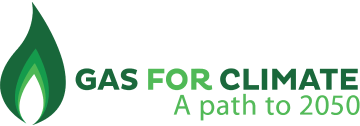- Study published today by the Gas for Climate initiative sets out plan to meet Paris Agreement target in a cost-effective way
- Study sets out a vision for net zero greenhouse gas emissions in the EU by 2050
- Renewable gas used in existing infrastructure can be combined with renewable electricity to limit the cost of the energy transition
Renewable gas used in existing gas infrastructure could play an important role in reducing Europe’s greenhouse gas emissions to net-zero by mid-century, according to a study published today by the Gas for Climate initiative. Such a reduction is needed to comply with the Paris Agreement to keep global warming well below 2°C, avoiding dangerous levels of climate change.
Initiated mid-2017, the Gas for Climate group consists of seven leading European gas transport companies (Enagás, Fluxys Belgium, Gasunie, GRTgaz, Open Grid Europe, Snam and Teréga) and two renewable gas industry associations (European Biogas Association and Consorzio Italiano Biogas). Gas for Climate is committed to achieve net zero greenhouse gas emissions in the EU by 2050 and the group commissioned Ecofys, a Navigant company, to prepare a study into the future role of gas in a net-zero emissions energy system.
Their study shows that it is possible to scale up renewable gas production between now and 2050 to more than 120 billion cubic metres annually, including both renewable hydrogen and biomethane. The biomethane potential is based on an early and conservative scenario on the sustainable use of European biomass potential. Using this renewable gas in existing gas infrastructure for the heating of buildings, to produce dispatchable electricity as a complement to wind and solar, and to fuel heavy transport, could save about €140 billion annually by 2050 compared to a future energy system without any gas.
The CEOs of the nine Gas for Climate members (Marco Alverà, Snam, Marcelino Oreja Arburúa, Enagás, Dr. Jörg Bergmann, Open Grid Europe, Pascal De Buck, Fluxys Belgium, Han Fennema, Gasunie, Piero Gattoni, Consorzio Italiano Biogas, Dominique Mockly, Teréga, Jan Štambaský, European Biogas Association, Thierry Trouvé, GRTgaz) jointly declared:
We are committed to achieve net zero greenhouse gas emissions in the EU by 2050 to meet the Paris Agreement target. Renewable gas used in existing gas infrastructure can play an important role in this.
We want to facilitate a large scale-up of EU produced renewable hydrogen and biomethane that is transported, stored and distributed through existing gas infrastructure to be used in our energy system in a smart combination with renewable electricity. This will help Europe to meet the Paris Agreement target at the lowest possible costs while enhancing Europe’s energy security.”


